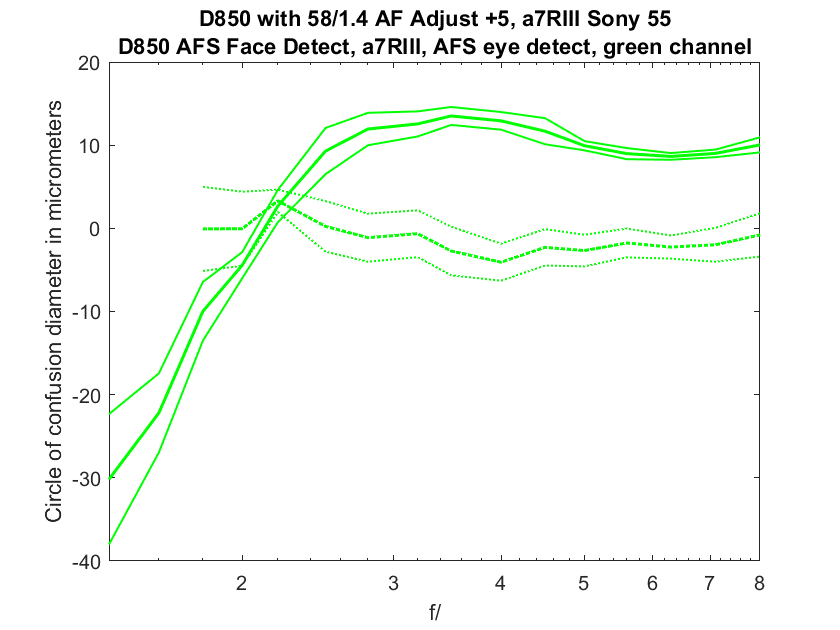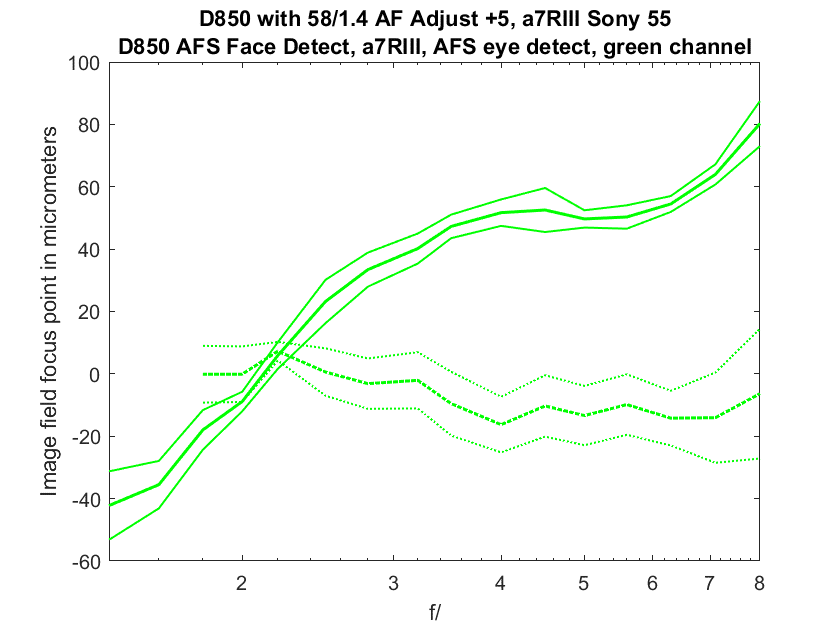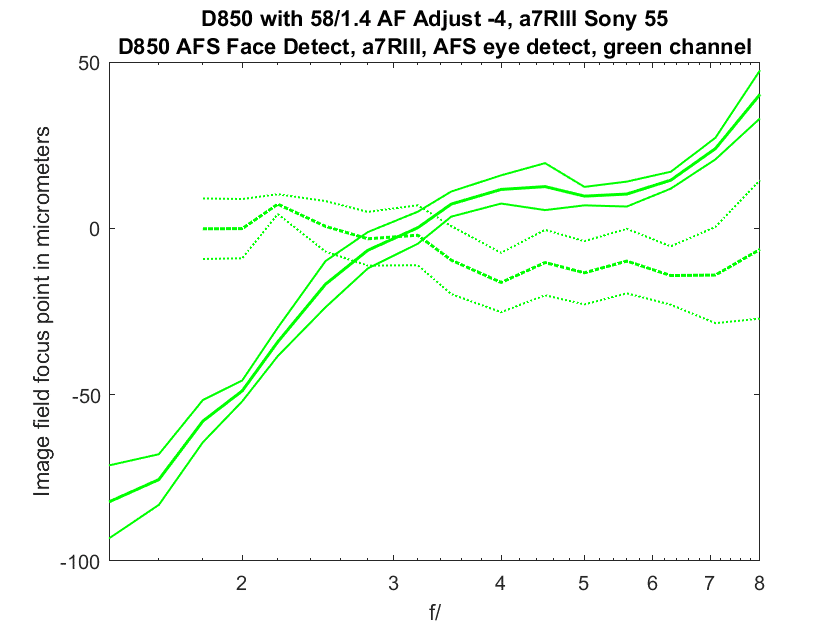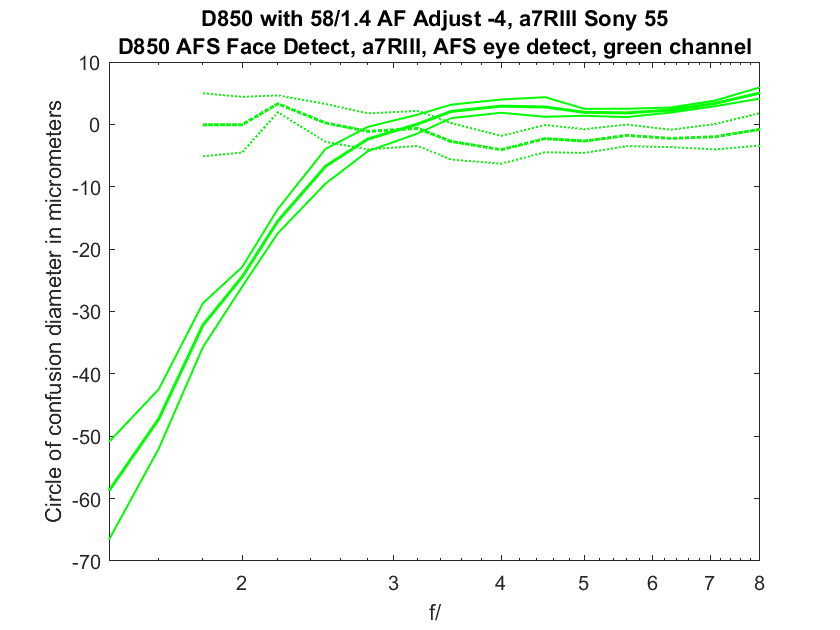[This post is revised as of 1/29/2018 with more accurate graphs.]
This is a continuation of a series of posts on the Nikon D850. You should be able to find all the posts about that camera in the Category List on the right sidebar, below the Articles widget. There’s a drop-down menu there that you can use to get to all the posts in this series; just look for “D850”. This is equally a post about the Sony a7RIII, and is also tagged as such.
I’ve had two requests for enhancements to yesterday’s post. The first one, as I interpret it, was to make the D850 and a7RIII easier to compare. To that end, I’ve plotted what I consider to two comparable results with both cameras on the same graph. I’ve plotted the green Adobe RGB color. It gets too messy if I plot all three color channels. The A7RIII results are the dotted lines.
The graph presents displacement of the image projected on the sensor from the desired green-channel focal plane. Negative numbers indicate front-focusing. The image-plane shift is in micrometers (um). I’ve made lines indicating the average (aka mean or mu) of the sample set bolder and added thin lines above and below the means that are one standard deviation (sigma) away from it.
The circles of confusion (CoCs) that result from the above:
A reader thought that it should be possible to get a good result with the 58/1.4 on the D850 from f/3.5 to f/8 by optimizing the AF Adjustment for that region. Here are the green channel results when you do that:




Thank you Jim for your work and accepting the “bet”.
We have now a better understanding of Nikon and Sony autofocus, speaking of Nikon it is clear that lens selection matters and you have to know your lenses to reduce the issues with off-sensor pdaf.
It is strange that , having a firmware dedicated to lens profiles, Nikon has not implemented a form of focus shift correction, at least on D850 , it should be no more than a look-up table for every Nikon lens.
Could you verify the 58mm focus shift using your D5?
Nikon is not Canon (they say Canon cripples the cheaper models for marketing reasons) but I have this little doubt now.
IF you’re talking about the 58/1.4 focus shift, there’s no need to use the D5. Here is the focus shift of that lens when manually focused once at the beginning of the series, and the focus point unchanged after that:
http://blog.kasson.com/a7riii/d850-58-1-4-vs-a7riii-55-1-8-af-s-and-focus-shift/
Look at the fifth and sixth plots.
Or did you want me to find out how well the AF on the D5 works?
No
I am sure that the 58 is the focus shift champion.
I am sure , now, the D850 has no correction and was thinking about the D5, that camera has less need ( bigger CoC tolerated) but it is the top of the line. So if you can and have the time it will be useful to know if D5 confirm the dumbness of Nikon engineering.
LOVE LOVE LOVE the new charts !!!!!
Way more information in a single view.
Brilliant!